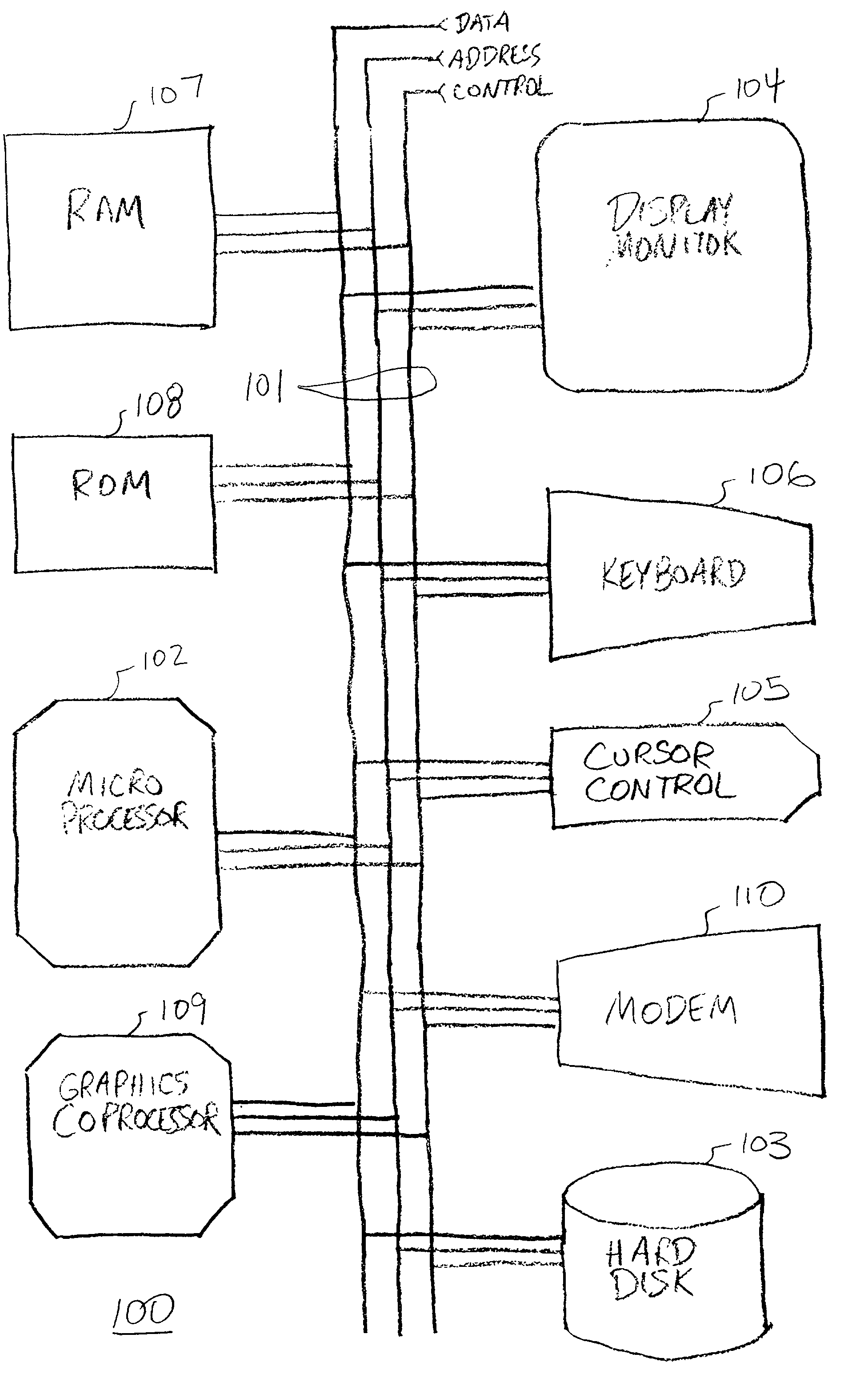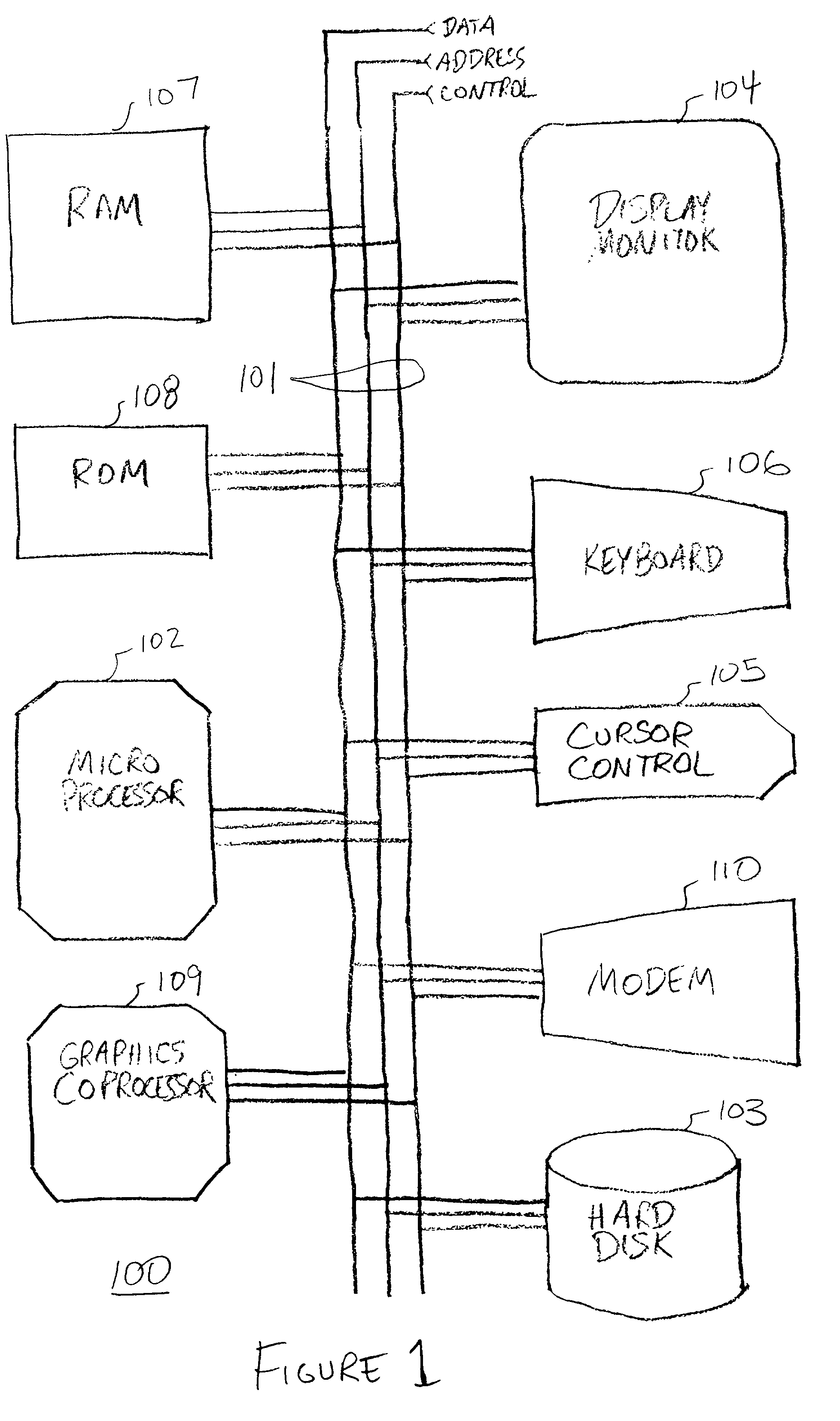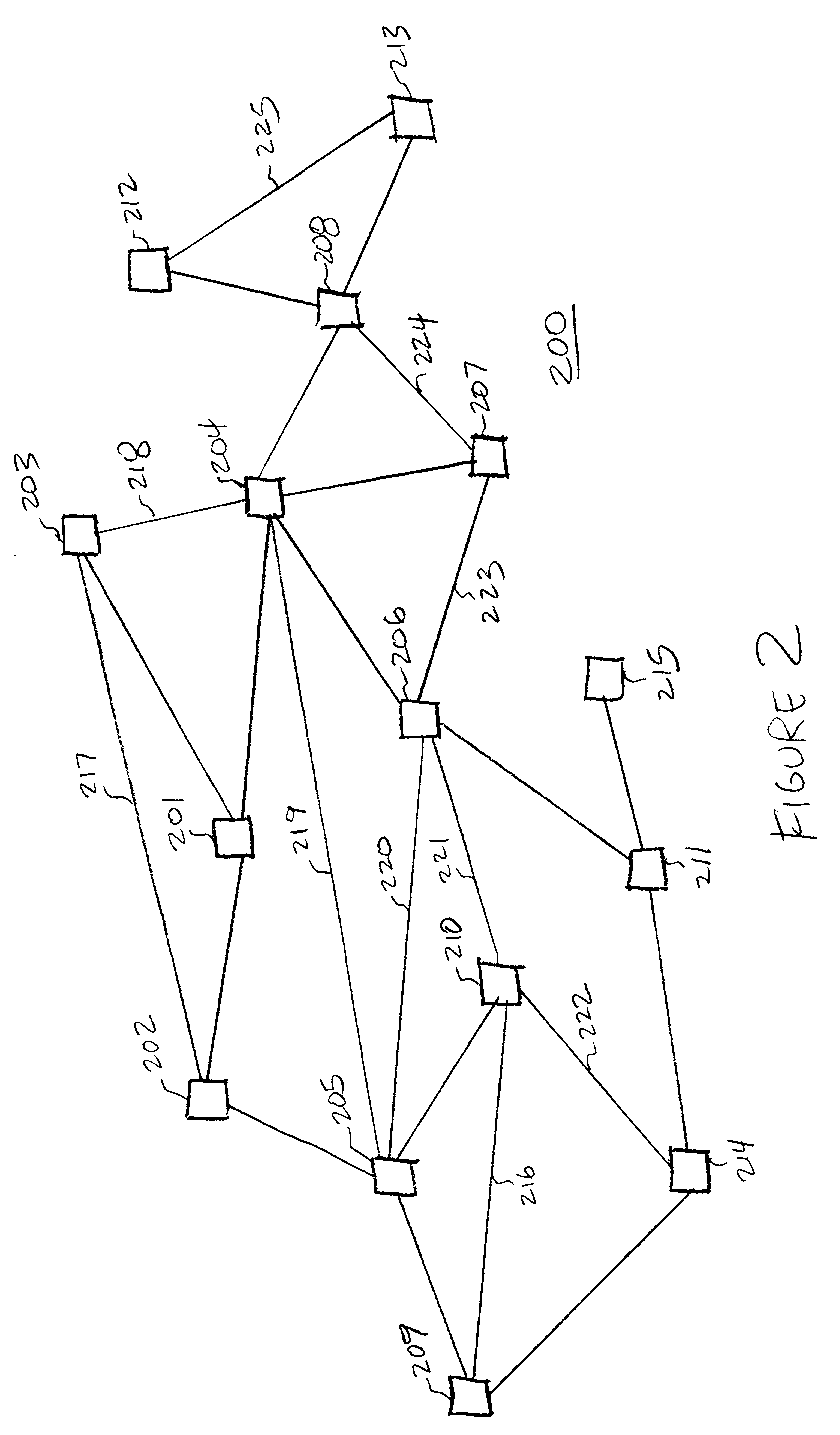Usage based methods of traversing and displaying generalized graph structures
a graph structure and usage information technology, applied in the field of displaying generalized graph structures, can solve the problems of difficult problem of visualizing a general directed graph, no conventional methods reference usage information in generating structures, no conventional system modifies the positioning of nodes based within displayed structures,
Inactive Publication Date: 2002-06-06
GOOGLE LLC
View PDF0 Cites 50 Cited by
- Summary
- Abstract
- Description
- Claims
- Application Information
AI Technical Summary
Problems solved by technology
Although some conventional web site display methods encode usage information in the visualization, no conventional methods reference usage information in generating the structure to be displayed from the generalized graph structure.
Moreover, no conventional system modifies the positioning of nodes based within a displayed structure upon the nodes usage.
Visualizing a general directed graph is well-known and difficult problem.
In fact, none of the current graph layout algorithms can deal with a 7,000-node graph in a reasonable manner.
However, as a subdomain of directed graph, web site linkage structures tend to be rather hierarchical.
Because of the large number of links in a large generalized graph structure, often it is impractical to display all of the links.
No conventional systems modify the layout of items based upon their usage characteristics.
In this alternative, a vertical slice is presented at the cost of missing nearby neighbors.
However, this projection does not negate the power of the three dimensional structure.
Given the infancy of the web, it is not surprising that the interactions and relationships within web ecologies are not very well understood.
As the world wide web continues to grow both in the number of users and the number of documents made accessible, the problem of understanding the correlations between the producers of the information, the characteristics of the information, and the users of the information will most likely remain.
Method used
the structure of the environmentally friendly knitted fabric provided by the present invention; figure 2 Flow chart of the yarn wrapping machine for environmentally friendly knitted fabrics and storage devices; image 3 Is the parameter map of the yarn covering machine
View moreImage
Smart Image Click on the blue labels to locate them in the text.
Smart ImageViewing Examples
Examples
Experimental program
Comparison scheme
Effect test
Embodiment Construction
has been presented for purposes of illustration and description It is not intended to be exhaustive or to
the structure of the environmentally friendly knitted fabric provided by the present invention; figure 2 Flow chart of the yarn wrapping machine for environmentally friendly knitted fabrics and storage devices; image 3 Is the parameter map of the yarn covering machine
Login to View More PUM
 Login to View More
Login to View More Abstract
A method for generating a tree structure representation of a generalized graph structure for display includes the more important links in the representation. Usage parameters are referenced in generating the tree structure from the generalized graph structure. Frequency, recency, spacing of accesses, and path information are exemplary types of usage parameters. A breadth-first or depth-first traversal of the graph references usage parameters associated with each node or link. The usage parameters which are associated with each node are referenced in order to determine the visitation order. The visitation order is determined by visiting the highest used nodes or links first. A method of displaying the tree structure references the usage parameters to determine the positioning of the nodes in the layout of the tree structure. In a preferred embodiment, the root node is positioned in the center of the layout. In one example, sibling nodes are spread out on links which emanate radially about their parent. The highest-used sibling nodes can be placed farthest apart from each other so as to achieve optimal separation so that they have the most growth space. The lowest-used nodes are then placed in the remaining space between the high-usage nodes. In another example, sibling nodes are positioned at the same radius from the root node. Each leaf node in the hierarchy is assigned the same amount of angular space. The layout angle of each node is a function of the ranking of the node's usage parameter relative to its siblings. Derived usage parameters such as need probability, cocitation clustering, or functions of both node and link usages can alternatively be referenced.
Description
[0001] This Application is related to the following Applications, which were field of even date herewith:[0002] (1) "Methods for Visualizing Transformations Among Related Series of Graphs," by James E. Pitkow, et al., Attorney Docket No. XERX1004MCF / SES; and[0003] (2) "Methods for Interactive Visualization of Spreading Activation Using Time Tubes and Disk Trees," by Peter L. T. Pirolli, et al., Attorney Docket No. XERX1005MCF / SES.[0004] 1. Field of the Invention[0005] The present invention is related to the field of displaying generalized graph structures. Specifically, the present invention is related to generating a tree structure representation for display of a generalized graph structure, and the present invention is related to displaying tree structure representations of a generalized graph structure. The present invention addresses the problem of laying out large directed graphs, such as World Wide Web sites, so that the important relationships are exposed.[0006] 2. Discussion...
Claims
the structure of the environmentally friendly knitted fabric provided by the present invention; figure 2 Flow chart of the yarn wrapping machine for environmentally friendly knitted fabrics and storage devices; image 3 Is the parameter map of the yarn covering machine
Login to View More Application Information
Patent Timeline
 Login to View More
Login to View More Patent Type & Authority Applications(United States)
IPC IPC(8): G06F12/00G06F17/30
CPCG06F17/30014Y10S707/99933G06F17/30882G06F17/30855G06F16/94G06F16/748G06F16/9558
Inventor CHI, ED H.PIROLLI, PETER L. T.PITKOW, JAMES E.GOSSWELLER, RICHMACKINLAY, JOCK D.CARD, STUART K.
Owner GOOGLE LLC
Features
- R&D
- Intellectual Property
- Life Sciences
- Materials
- Tech Scout
Why Patsnap Eureka
- Unparalleled Data Quality
- Higher Quality Content
- 60% Fewer Hallucinations
Social media
Patsnap Eureka Blog
Learn More Browse by: Latest US Patents, China's latest patents, Technical Efficacy Thesaurus, Application Domain, Technology Topic, Popular Technical Reports.
© 2025 PatSnap. All rights reserved.Legal|Privacy policy|Modern Slavery Act Transparency Statement|Sitemap|About US| Contact US: help@patsnap.com



